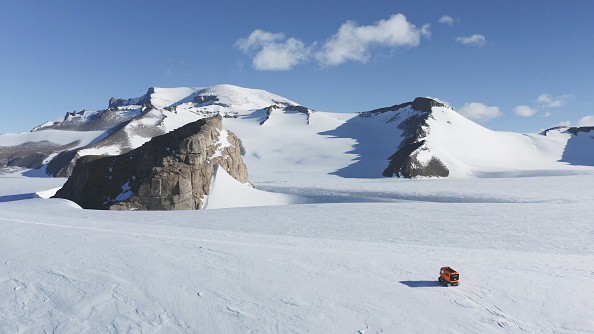Antarctica became more accessible during the 2019-20 season, about 74,000 tourists came to explore the remote continent, with the majority arriving by ship. There have been increased scientific activities taking place in the continent, with over 70 research stations housing thousands of researchers.

How Human Activities Affect Antarctic Snow
This activity, which is expected to grow in the future, creates a physical footprint that will be felt for a long time. Humans are having an increasing impact that can be measured and quantified in their quest to study one of the few (almost) untouched locations on Earth.
Scientists first gathered samples from 28 locations across a 2,000km stretch of the most-traveled area of Antarctica, ranging from the Antarctic Peninsula to the core of the West Antarctic ice sheet, as per Phys.org.
The researchers demonstrate how soot released by humans affects the qualities of Antarctic snow near high-traffic regions by analyzing the quantity and type of light-absorbing particles in snow samples.
To determine the quantity and kind of particles, samples were passed through filters and their optical characteristics were evaluated.
Many different types of light-absorbing impurities can be found in Antarctic snow, although only in trace amounts-the background level of black carbon in Antarctic snow is roughly 1 nanogram (one billionth of a gram).
The "angstrom exponent" was utilized by the researchers to distinguish between dust and black carbon. Smaller particles absorb more light than larger particles, hence the type of particles in the snow samples could be deduced from how the filtered particles interacted with light in the lab.
Black Carbon May Influence Albedo
According to Science Alert, all samples taken near human settlements had black carbon levels that were significantly higher than the typical Antarctic background levels, indicating that human emissions were present. Increased quantities of black carbon will have an impact on how light is absorbed by snow, a feature referred to as "albedo."
Snow with a lower albedo melts more quickly. As a result, the amount of black carbon in the snow samples gathered might be used to determine if snow melt rates have increased as a result of human activity.
Human-produced black carbon may be causing surface snow to melt by up to 23mm every summer in locations near human settlements on the Antarctic Peninsula.
Research Findings
When it comes to tourist activities, the authors estimate that between 2016 and 2020, each visitor melted about 83 metric tons of snow, owing mostly to emissions from cruise ships.
Scientific research stations, for example, contribute to an order of magnitude higher per capita snow melt rate through the operation of fuel-intensive equipment and vehicles, often year-round.
This study backs up previous research on the effect of black carbon emissions in increasing ice and snow melt. Fires in the Amazon jungle, for example, have been discovered to hasten the melting of glaciers in the Andes.
The discovery of black carbon near towns in Antarctica matches recent studies on tiny pollution, such as the discovery of microplastics in sea ice and penguins. These findings suggest that human impacts may be more widespread and subtle than they appear at first glance.
As human activity in Antarctica grows, so will the impacts. Research on these current and potential effects is crucial for determining how they might be best managed or avoided entirely.
Related Article : Antarctica's Rivers and Lakes Hidden Under Ice Could Play a Significant Role in Rising Sea Levels
For more news, updates about Antarctica and similar topics don't forget to follow Nature World News!
© 2025 NatureWorldNews.com All rights reserved. Do not reproduce without permission.

